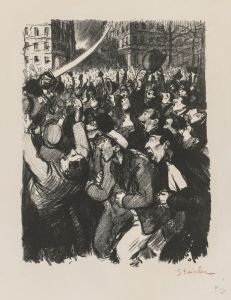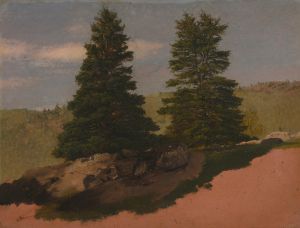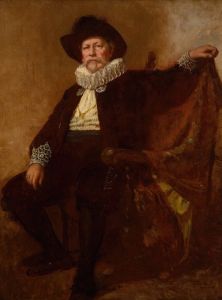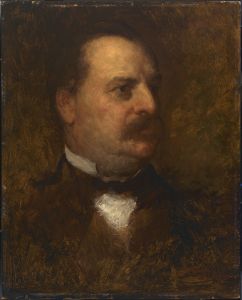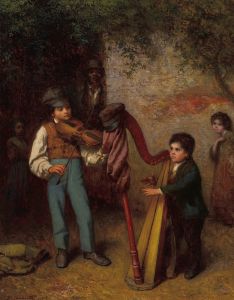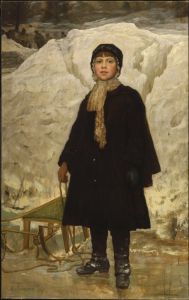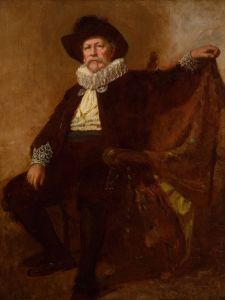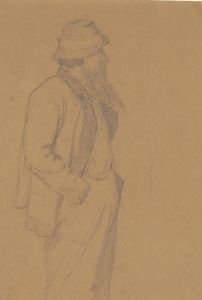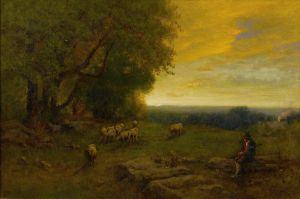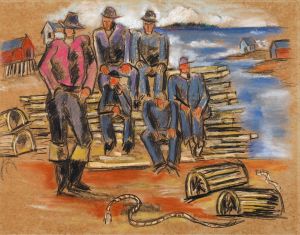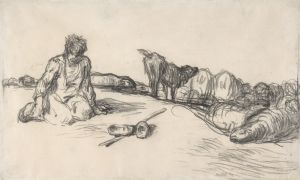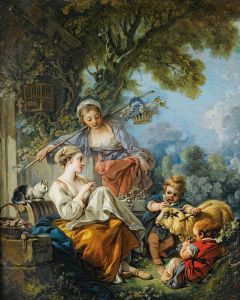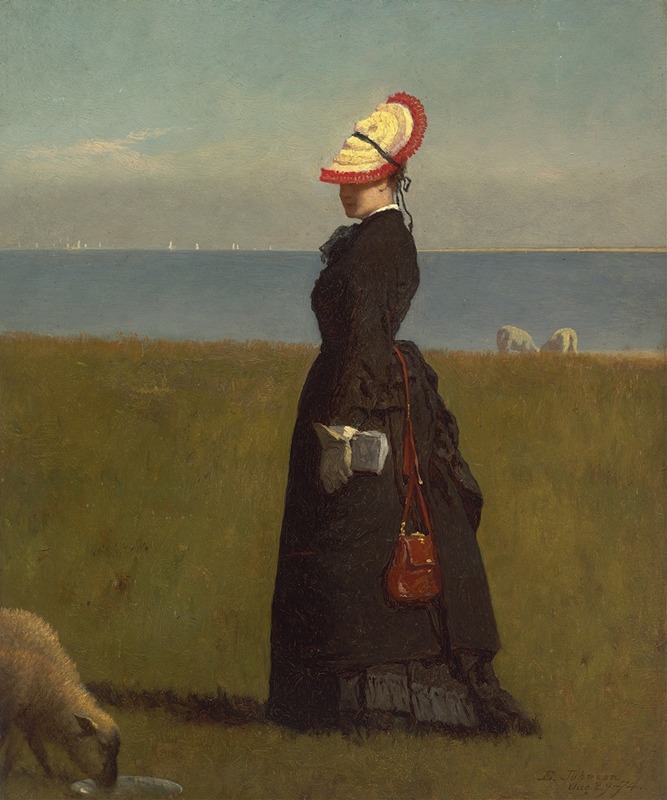
Lambs, Nantucket
A hand-painted replica of Eastman Johnson’s masterpiece Lambs, Nantucket, meticulously crafted by professional artists to capture the true essence of the original. Each piece is created with museum-quality canvas and rare mineral pigments, carefully painted by experienced artists with delicate brushstrokes and rich, layered colors to perfectly recreate the texture of the original artwork. Unlike machine-printed reproductions, this hand-painted version brings the painting to life, infused with the artist’s emotions and skill in every stroke. Whether for personal collection or home decoration, it instantly elevates the artistic atmosphere of any space.
Eastman Johnson's painting "Lambs, Nantucket" is a notable work by the American artist, who is renowned for his genre paintings and portraits. Johnson, born in 1824 in Lovell, Maine, was a co-founder of the Metropolitan Museum of Art in New York City and is often referred to as the "American Rembrandt" due to his masterful use of light and shadow.
"Lambs, Nantucket" is part of Johnson's broader body of work that captures rural and domestic life in 19th-century America. The painting depicts a serene pastoral scene, characteristic of Johnson's interest in everyday subjects and his ability to imbue them with a sense of tranquility and realism. The setting is Nantucket, an island off the coast of Massachusetts, which was a popular location for artists and vacationers during Johnson's time. Nantucket's landscapes and light provided rich inspiration for many of his works.
In this painting, Johnson's attention to detail and his skillful rendering of textures are evident. The lambs are depicted with a lifelike softness, and the surrounding environment is painted with a keen eye for the subtleties of natural light. This attention to detail not only showcases Johnson's technical prowess but also his deep appreciation for the simplicity and beauty of rural life.
Johnson's work often reflects themes of innocence and the pastoral ideal, and "Lambs, Nantucket" is no exception. The choice of lambs as the focal point of the painting may symbolize purity and peace, common motifs in pastoral art. The composition likely invites viewers to reflect on the harmony between nature and humanity, a recurring theme in Johnson's oeuvre.
Throughout his career, Eastman Johnson was celebrated for his ability to capture the essence of American life. His paintings often serve as historical documents, providing insight into the social and cultural landscapes of his time. "Lambs, Nantucket" is a testament to his skill in portraying the quiet dignity of rural America, a subject that resonated with many during the 19th century.
Johnson's influence extended beyond his paintings; he played a significant role in the American art community. As a founding member of the Metropolitan Museum of Art, he contributed to the establishment of one of the most important cultural institutions in the United States. His legacy is preserved not only through his art but also through his contributions to the American art scene.
"Lambs, Nantucket" remains a cherished piece within Johnson's body of work, exemplifying his mastery of genre painting and his ability to capture the subtleties of light and atmosphere. The painting continues to be appreciated for its artistic merit and its reflection of a bygone era in American history.






